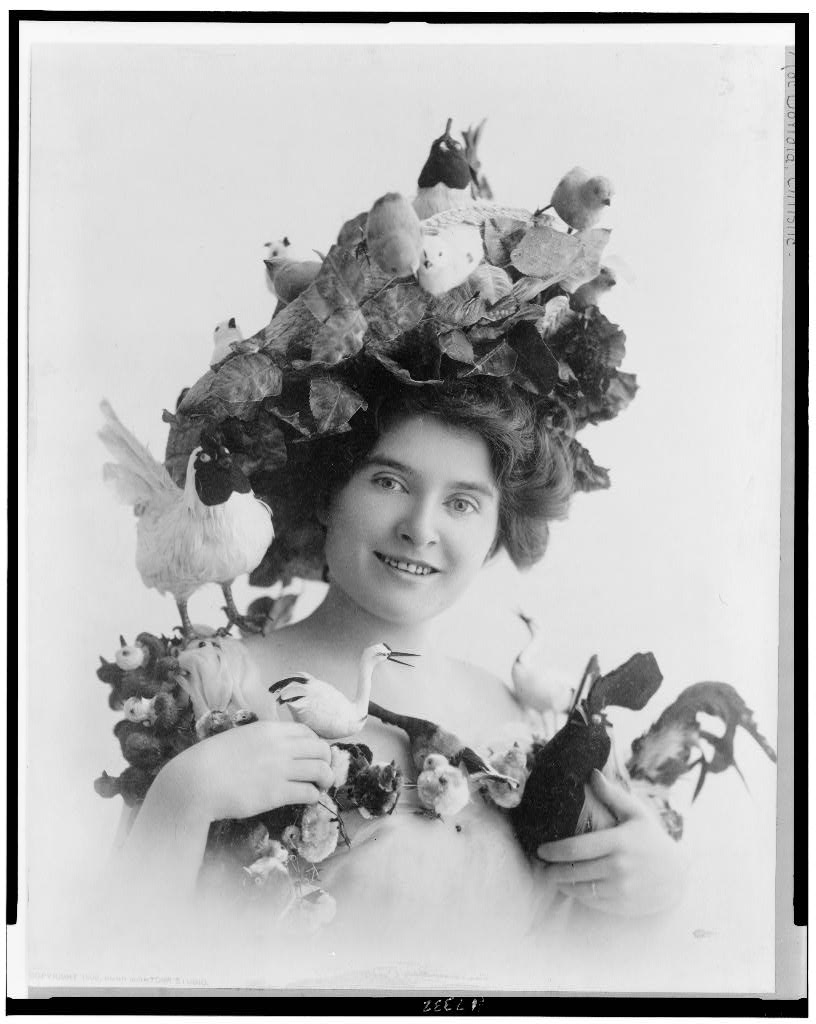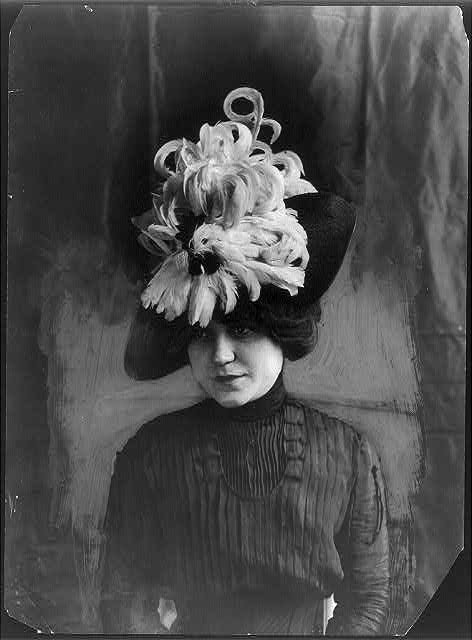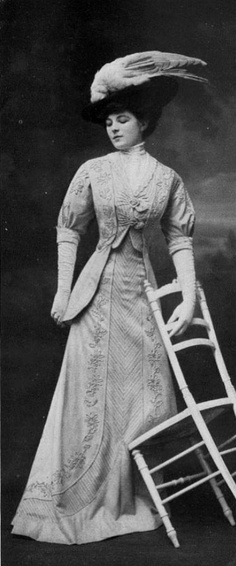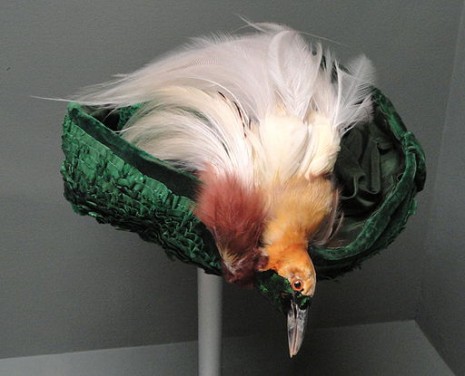The writer James Whorton opens his fascinating book, The Arsenic Century, with a news article from the London Times, 13 December, 1848. It recounts how for months, partridge hunters had been coming upon flocks of dead birds nestled together, eyes open, standing up, looking very much alive, but being, in fact, inexplicably dead. After some investigation, authorities concluded that the birds had been feasting on wheat seeds sown by farmers. The farmers had soaked the seeds in an arsenical compound to ward off insects, and the birds had been poisoned. No one could explain their upright, open-eyed position, but even then scientists knew that arsenic poisoning causes the body to remain strangely well-preserved.
Milliners jumped on the opportunity these dead birds afforded them, and partridges became popular adornments on hats. The pictures below aren’t partridges, but you can see that there was quite a demand for any number of species of birds on hats.


 Photos: Library of Congress, Wikimedia
Photos: Library of Congress, Wikimedia